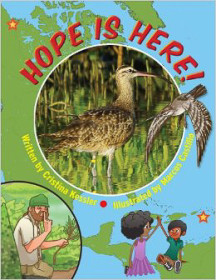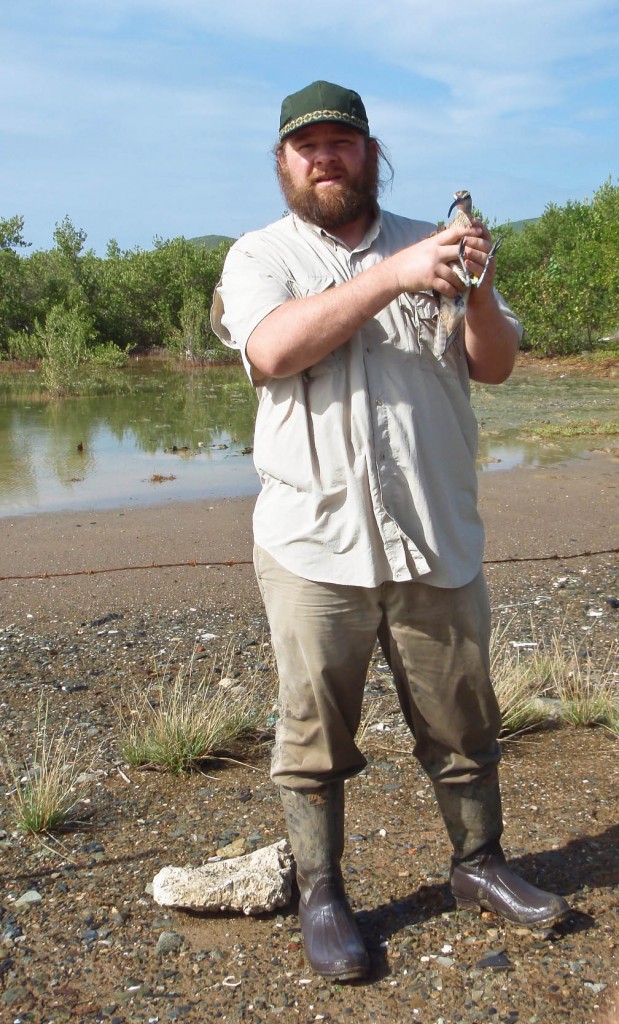Hope for Children
KE on Pamunkey River – King William County Dec 12
December 18, 2013Camellia – Benefit Rd – Chesapeake Dec 19
December 19, 2013

Cover of children’s book “Hope is Here” by Cristina Kessler. Christina Kessler (author) & Marcos Castillo (illustrator).
Each year for Christmas the First Lady of the U.S. Virgin Islands presents a new book to all of the children (K-3rd grade) throughout the Territory. The books are hard-bound editions that are intended to be keepsakes for the children. This year’s book, “Hope is Here,” was written by well-known children’s author Cristina Kessler of St. John. It is a conservation story based on Hope the whimbrel, a bird made famous through The Center for Conservation Biology’s whimbrel tracking project. CCB’s Fletcher Smith provided information about Hope for the book and is featured on the cover. The book is available on Amazon.
Connecting children to nature is a vital element of the conservation mission. Hope has made conservation real to the general public and to children of the U.S. Virgin Islands who have followed her travels and are familiar with her winter home. Each fall since 2009 Hope has returned to Great Pond, a 50 hectare mangrove wetland located on the southeast coast of St. Croix, to spend the winter. The site has become a tangible symbol of conservation for those species like Hope that migrate thousands of miles between breeding and winter grounds.
Hope has become an ambassador for migrants. She has made tremendous nonstop flights, moved great distances out over the open Atlantic, confronted storms while at sea, navigated with precision to stopover sites and shown high fidelity to her breeding site, her wintering site, and several staging areas. Her story as revealed through satellite tracking serves to further educate the public about the wonders of migration.

Fletcher Smith with Hope – Fletcher Smith holds Hope in Great Pond after removal of transmitter on 20 November, 2012. Photo by Lisa Yntema.
Hope is one of more than two dozen birds that have been tracked in a collaborative effort between The Center for Conservation Biology, The Nature Conservancy, US Fish and Wildlife Service, Georgia Department of Natural Resources Non-game Division, Canadian Wildlife Service, Manomet Center for Conservation Sciences, and Virginia Coastal Zone Management, designed to discover migratory routes that connect breeding and winter areas and to identify migratory staging areas that are critical to the conservation of this declining species.
Written by Bryan Watts | bdwatt@wm.edu | (757) 221-2247
December 18, 2013



